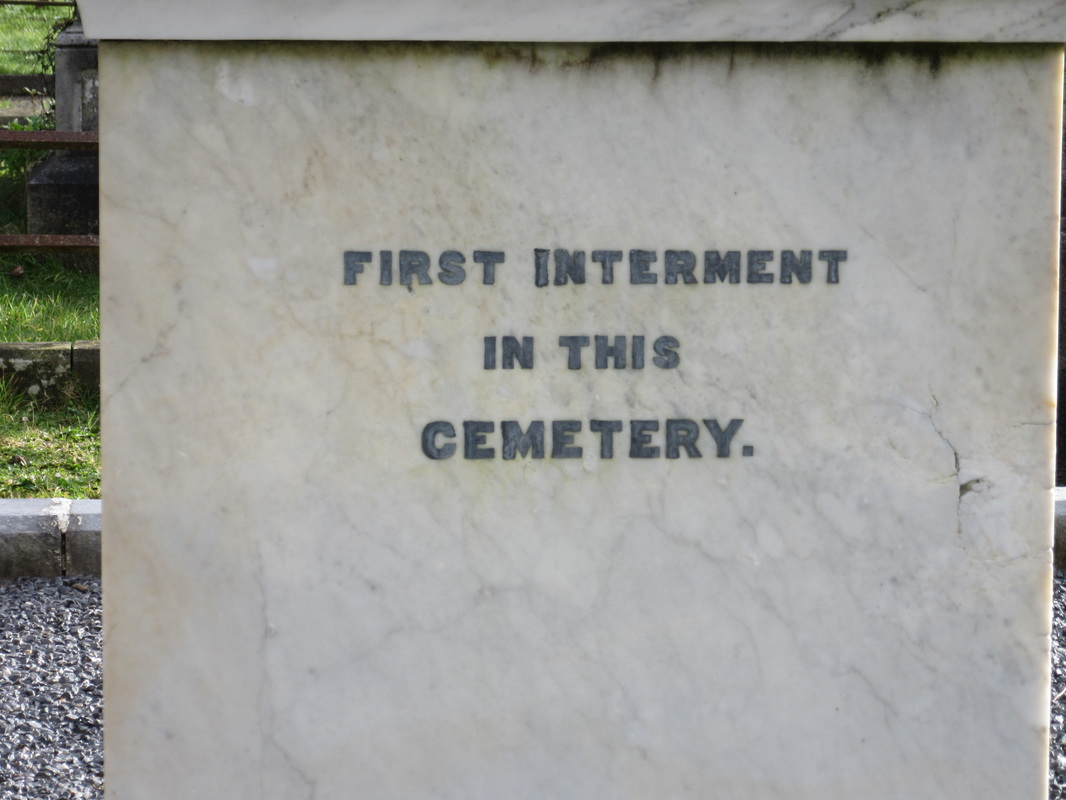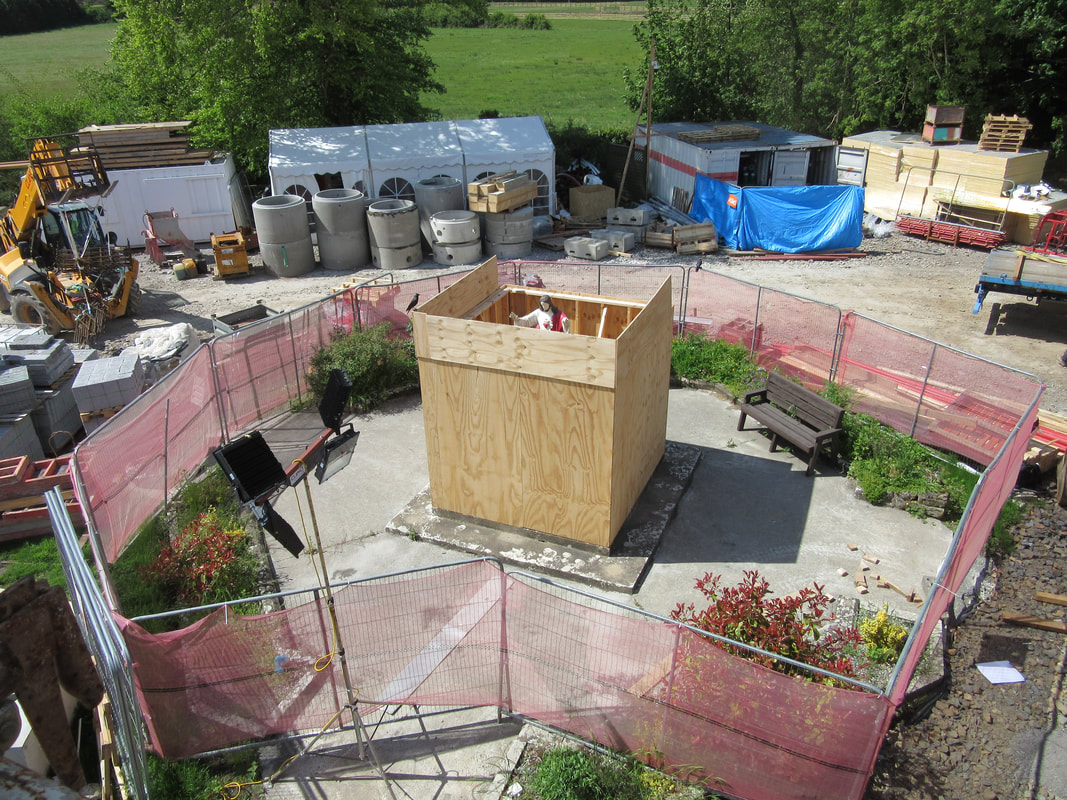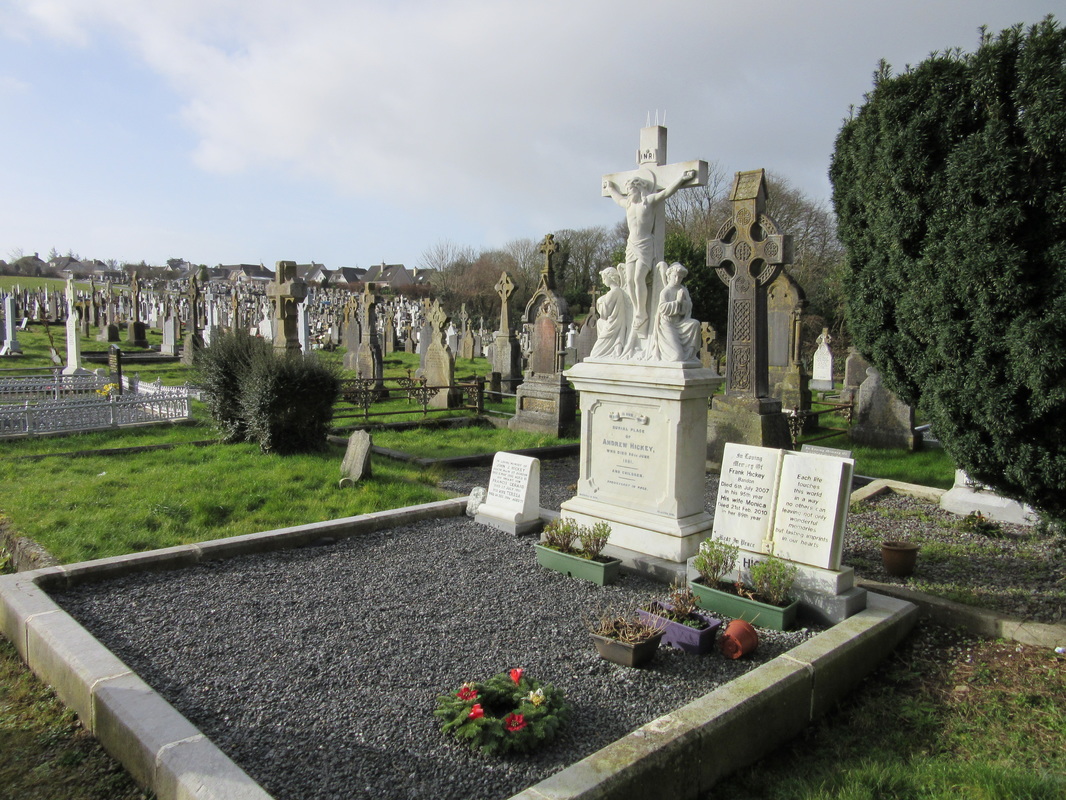| Times past were most definitely different to society today. Recently I was reminded of this in my reading and in a visit to a cemetery. Adjacent to the wall of St Patrick’s Church cemetery in Bandon is a headstone which records the first burial in the cemetery. When I read the headstone, I was thinking that the power of the church over its community in 1881 was greater than today. It was probably a great honour to be the first burial. I would not be surprised if there was a payment to the parish priest, over and above burial fee, for such an honour. A few weeks back, I finished The Apprentice by Éamon Kelly, the seanachie, He recounted details of having to pay the parish priest for a pew in the church and also an annual rental fee. If a parishioner did not pay, they were welcome in God’s church but only to stand or kneel at the back. Last week a tweet from GraveyardDective about a plaque recording the first burial in a cemetery reminded me of the Bandon headstone. Leaving the graveyard that day, I made a mental note to visit some newer graveyards to check whether they record the first burial. I suspect not. I also expect that the market willing to pay a premium for being the first is low – but I could well be wrong. | “We didn’t have a family pew in the church. They were for the well-to-do farmers, shopkeepers and teachers, who could afford to buy a new pew and pay the yearly rent for it. Some of those seats were never full, yet outsiders never sat in them and I don’t think they would be welcome. The family pew was private property in a public place. One year the parish priest put up the rental and family, thinking the charge was dear enough, refused to pay. The parish priest ordered them out of the seat. They refused and the priest had the pew taken out and put behind the church, where in the end it rotted. The family never went to Mass in that church again during the parish priest’s reign, but drove all of the way to the friary in town. They never spoke to the parish priest after. Even when he came to the stations in their house they didn’t speak, because they felt that he had humiliated them before their neighbours and friends. There was a large space behind the seats and those of little property or none stood or knelt there, the men on the gospel side and the women at the side of the epistle. It was strange that among the poor there was segregation, while in the pews husbands sat with their wives.” |
|
0 Comments
Your comment will be posted after it is approved.
Leave a Reply. |
AuthorFrom Cork. SUBSCRIBE
Unless otherwise specifically stated, all photographs and text are the property of www.readingthesigns.weebly.com - such work is licenced under a Creative Commons Attribution - ShareAlike 4.0 International Licence
Archives
May 2024
Categories
All
Blogs I Read & LinksThought & Comment
Head Rambles For the Fainthearted Bock The Robber Póló Rogha Gabriel Patrick Comerford Sentence First Felicity Hayes-McCoy 140 characters is usually enough Johnny Fallon Sunny Spells That’s How The Light Gets In See That Tea and a Peach Buildings & Things Past Built Dublin Come Here To Me Holy Well vox hiberionacum Pilgrimage in Medieval Ireland Liminal Entwinings 53degrees Ciara Meehan The Irish Aesthete Líníocht Ireland in History Day By Day Archiseek Buildings of Ireland Irish War Memorials ReYndr Abandoned Ireland The Standing Stone Time Travel Ireland Stair na hÉireann Myles Dungan Archaeouplands Wide & Convenient Streets The Irish Story Enda O’Flaherty Cork Archive Magazine Our City, Our Town West Cork History Cork’s War of Independence Cork Historical Records Rebel Cork’s Fighting Story 40 Shades of Life in Cork Roaringwater Journal |






